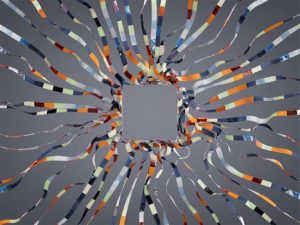Memory Fabric: Textiles That Store Digital Data
Imagine being able to wear your favorite memories, data, and information on your clothes. Sounds like something out of a sci-fi movie, right? Well, the future is now with the innovative concept of memory fabric. This revolutionary technology has combined textiles with digital storage capabilities, creating a new and exciting way to store and display data. In this article, we’ll delve into the world of memory fabric and uncover its potential uses, benefits, and future developments.
What is memory fabric?
Memory fabric, also known as smart fabric or e-textile, is a type of fabric that has the ability to store, transmit, and retrieve digital data. These textiles are embedded with tiny electronic components such as sensors, microchips, and conductive threads, allowing them to interact with electronic devices and networks. This integration of technology and textiles has opened up a whole new dimension in the world of fashion, design, and functionality.
How does it work?
The key component of memory fabric is the use of conductive threads, which act as the “brains” of the fabric. These threads are made of highly conductive materials such as silver, copper, and carbon, and are woven into the fabric or embroidered onto it. They act as the conduits for electricity, allowing data to be stored and transmitted through the fabric.
The fabric is then connected to an external source, such as a computer or smartphone, through a network of tiny wires and circuits. This allows the user to upload, store, and retrieve data onto the fabric. The data can be anything from text and images to audio and video files.
Additionally, memory fabric can also be embedded with sensors that allow it to gather and transmit data in real-time. For example, a smart shirt can monitor the wearer’s heart rate and temperature and send this information to a connected device. This opens up endless possibilities for applications in healthcare, sports, and fitness.
Potential uses of memory fabric
Memory fabric has the potential to revolutionize various industries and enhance our daily lives in many ways. For fashion and design, it allows for endless possibilities in terms of aesthetics, functionality, and customization. Imagine being able to change the color, pattern, or design of your clothes with a simple tap on your phone.
In the healthcare industry, memory fabric can be used for remote patient monitoring, where vital signs and medical data can be transmitted in real-time to healthcare providers. This can improve the quality of care, reduce hospital visits, and even save lives.
For military and defense, memory fabric can be used to create smart uniforms that monitor and track soldiers’ health and performance. This can provide valuable data for military operations and improve the safety and well-being of troops.
Benefits of memory fabric
One of the main benefits of memory fabric is its durability. The electronic components of the fabric are embedded within the material, making it less prone to damage compared to external devices. This also makes it more resistant to water, dust, and other environmental factors.
Memory fabric also has a low power consumption, making it energy-efficient and sustainable. This is because the fabric utilizes the energy from the device it is connected to, and does not require its own power source.
Furthermore, memory fabric offers a discreet way to store and access data. Unlike external devices, such as USB drives or smartphones, the data is seamlessly integrated into the fabric, making it less obvious and more secure.
The future of memory fabric
The concept of memory fabric is still in its early stages, but the potential for its development is vast. With advancements in technology, we can expect to see memory fabric becoming more lightweight, flexible, and even washable. The possibilities for its use and applications will also continue to expand, making it an essential part of our daily lives.
In conclusion, memory fabric is not just a cool concept, but a game-changer in how we interact with technology and fashion. Its potential uses, benefits, and future developments make it an exciting and revolutionary invention that we can’t wait to see more of in the near future.







